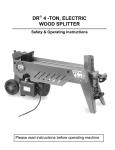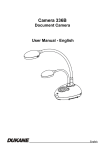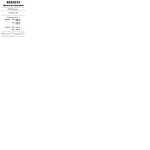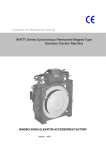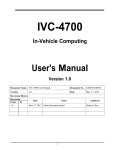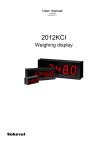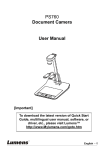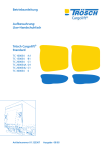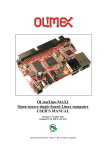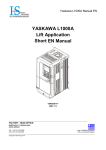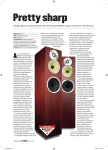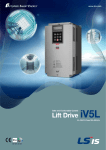Download Operation and Maintenance Manual For WYJ 250 Series Permanent
Transcript
Operation and Maintenance Manual For WYJ 250 Series Permanent-Magnet Synchronous Gearless Traction Machine Ningbo Xinda Elevator Accessories Co., Ltd. July 2002 1 Operation and Maintenance Manual For WYJ 250 Series Permanent-Magnet Synchronous Gearless Machine 1. General remarks-Main points for operation In order to ensure safe, reliable and excellent operation of the elevator, the elevator-operator must receive specialized training to get familiar with the installation, test and operation of the elevator. Moreover, the operator must acquaint himself with the structure of the elevator. Installation, test, acceptance, operation and maintenance should be carried out in accordance with the instructions in this manual and GB7588-2003 Safety Rules for Elevatot Manufacture and Installation, (egvEN81-1:1998Safety Rules for the Construction and Installation of Electric Lifts). Should any personal or equipment accident arises from mishandling or breach of above regulations in the process of installation, commissioning, acceptance, operation and maintenance, the manufacturer would not bear any responsibility. It is necessary to take sufficient precautionary measures or else causes fatal personal injury (even death) or serious damage to the equipment. It is necessary to take adequate preventive measures, otherwise personal injury (but not death) or equipment damages may be caused. However, serious personal injury (even death) or serious equipment damages may also be caused when preventive measures doesn’t change along with the external conditions. * Gearless traction machine must be installed in the room that can be locked, so that only specially trained persons can have access to it. * Operators must operate the machine strictly according to the GB7588-2003 egvEN81-1: 1998 . Otherwise dangers and damages will be caused. * After completion of the installation, check whether the motor and brake can function normally according to the requirements. * The motor must not be connected with 3-phase power supply, but should be powered by the inverter that is designed to drive the synchronous permanent magnet type motor. * The magnet coils of the motor and brake are heating elements, and any of other objects must not be covered on the coils to effect heat dissipation. * Manual brake release and hand winding device can only be used in case of emergency and must not be used under normal conditions, unless specified in this manual. * High voltage is generated while motor rotates, and even if the inverter power supply is disconnected, therefore touching the motor terminals is prohibited. * During high-speed rotation of the motor, it is prohibited to apply brake by directly shortcircuiting the terminals. But in case of emergency or at zero-speed startup, terminal shortcircuiting is allowed in order to move the car up and down slowly for the purpose of rescuing. 2 General Description WYJ250 series permanent magnet synchronous gearless machine is driven by a permanent magnet synchronous three-phase motor with low speed and large torque, and has the advantages of low energy consumption, low noise, no pollution and little maintenance etc. Permanent magnet synchronous gearless machine of this series include two models----single wrap and compound wrap. All the traction machines have winding ratio 2:1, or 1:1 for some sizes upon special request from customers if the manufacturer agrees. The construction of this series of traction machines is shown in the figure 1 as below: 2 Stator (4) is composed of high-strength steel structure welded base with feet and stator cores with windings. The rotor (5) is supported on the front and rear end covers where bearings are mounted. The front end cover is fitted with double row self-aligning roller bearing, and rear end cover is fitted with deep-groove ball bearing. The motor is designed to have 24 poles. NdFeB permanent magnet with high magnetic performance is fixed on the external round surface of the rotor with high-strength bonding agent and dovetail slot, in order to ensure that the magnet is not demagnetized or come off even if the rotating torque is more than 2.5 times the rating during operation. Traction sheave (1) is integrated with braking wheel (2) in order to be connected with the shaft through tapered fit. The brake is made up of two independent braking arms 10 , brake shoe (11), release magnet (13) and a pair of micro switches(12) judging the released brake (each on left and right sides). The brake torque is adjusted by rotating the screw (21) and thus changing the normal pressure of spring (20) acting on the braking arm (brake shoe). The screw (18) is used for the adjustment of the distance between brake shoe and brake wheel rim. The screw (9) is used for the adjustment of the uniformity of this distance, and screw (19) is used for the adjustment of acting position of the micro switches. The encoder can be installed in two optional methods. The figure shows the first installation method, which is suitable to the encoder with a small tapered shaft (for example 1300 series encoders made by Heidenhain in Germany): insert the encoder into the tapered bore of main shaft of the traction machine, fix it with the main shaft using a bolt, and its casing is fixed on the machine base through internal expansion. The second method is to insert main shaft of the traction machine into the big hole on the encoder and connect the hole with the main shaft using a key (for example, Tamagawa OIH100 series) and the casing is fixed onto the end cover using a spring via screws. Our encoder with standard configuration is ERN478 manufactured by Heidenhain in Germany (which is compatible with ERN1387 except that its protection class (IP64) is higher than ERN1387 IP40 ) which is provided with 6~10m cable by Haidenhain. The encoder has close relation with matched frequency inverter. When placing an order, the type of frequency inverter should be selected before determining the configured encoder or select the inverter according to the encoder. There are two different terminal blocks provided in the terminal box (6) of the motor. One of them is fitted with three pairs of terminals and three-phase winding of the motor is connected in “Y” form, with the terminals of three-phase lead-outs connected to appropriate terminals on the block and the other three terminals provided for the connection of power supply. The other terminal block has two pair of terminals, and the terminals on one side are connected with three connected-in-series PTC heat detectors, and the ones on the other side are provided for the users to connect to corresponding terminals of related controllers. Please refer to section 6.2 for the terminal arrangement and connection of the brake magnet terminal box (14). The handwinding wheel (22) and manual brake release (23) are supplied as accessories together with the traction machine and are not shown in the figure. The bearing bore of handwinding wheel is covered with a baffle (16) in order to prevent malfunction of the inserted handwinding wheel. The microswitch (15) is used to disconnect the safety circuit in order to prevent malfunction during operation. For easy installation by users, as optional parts, we will supply various machine brackets and different sizes of diversion sheaves (guide sheaves) used for the car, counterweights and machine room. Figure 1 3 3. Scope of Supply l l WYJ250 series traction machine complying with the order offerd by customer. Supplied accessories: one connecting cable of encoder(for ERN438-2048 with standard configuration, the cables are attached to the encoder), one handwinding wheel and one brake release. One user’s manual for traction machine and one user’s manual for the encoder. Optional parts: machine frame, diversion sheave (guide sheave) etc. will be supplied according to the ordering contract. Special requirements should be specified in the form of inclosure of the contract . Types A, B and D brackets and the diversion sheaves with diameters 320, 410, 440, 520 and 640 are available. Users should select the products within the scope of supply as possible in order to avoid additional manufacturing cost and affect the delivery time. l l 4. Movement & storage The machine has been strictly tested before leave the factory. Please check the goods by visual to see if they are intact When the goods are arrived . If the damage is caused by transportation, claim damages from them; Don’t install and run the damaged machine even needed urgently. The machine should be lifted as shown in Figure 2 during handling. Figure 2 * The lifting eyebolt is only allowed to hoist the machine or attached machine frame, additional load is not allowed. l l l The traction machine should be placed and installed in an enclosed place that is dry, free of dust, well ventilated and free of apparent vibrations. Before use, the dielectric resistance of the motor and brake magnet should be tested with 500V megohmmeter, and the measured resistance value should be biger than 0.5M . If the resistance is below this value, related coils should be heated for drying treatment. The heating process may be executed with mains-frequency power supply, but the power voltage should be below 5% of the rated voltage for the motor or below 30% of action voltage. The entire heating process must be observed and shell surface temperature should be controlled within 80 . If the machine has been stored for more than 3 moths, it should be operated by positive and negative direction for more than 10 minutes at the speed of 20r min to distribute the lubricating grease evenly and avoid bearing being rust. 4 5. Installation 5.1 General rules Before installation of the machine, calculate permissible load of the base and foundation to see if they are satisfied. * The base and foundation must be firm and hard enough to ensure the machine can be operated under all permissible load range. * The flatness of the ground where the machine will be installed should not exceed 0.2mm. * The machine must be installed in a closed room where relative safe protection measure can be observed. If the machine needs to be installed in a pit, the pit should be waterproof, because if the machine is soaked with water, it may cause destructive damage. * The feet of traction machine should be fixed using Grade 12.9 M20 bolts or M20 nuts, and a spanner with tightening torque of 530N.m. * The machine should be with anti-slip device for the hoisted steel rope on the course of installation. The clearance between the machine and steel rope should be no higher than 2mm during installation. 5.2. Insulation, protection class and cooling The brake and the machine should take F class insulation. Outer cover should take IP54 class insulation. The encoder ERN487-2048 should take IP64 class insulation. The entrance in the connection box for the incoming cables should be sealed The cooling way is IC00. 5.3. Operation environment The altitude should be no higher than 1000m. Ambient environment temperature should be -5 The relative value of maximum humidity at 20 40 . should be no higher than 90%, and no condensation will happen. Good ventilation should be taken to ensure that sufficient heat can be emitted by way of convection and radiation. 5.4 For compound-wound machine, the winding of traction rope should start at internal side (motor side). 6. Electrical connection 6.1 General rules The electric connection should be conducted by qualified electrician after the machine is installed. Switch off all circuits (including attached or auxiliary ones) before conducting any connection operations. Operate strictly subject to the following safe rules to avoid personal injury or machinery damage: 5 * Switch off power source * Any devices that can activate the machine by casual touches should be closed or locked. * Make sure that the power source has been separated by safe devices. * The circuit that can bring high voltage (more than 1000V) should adopt dependable grounding or short circuit. * Neighboring operating components should take safe devices or protective cover. * The permanent electric connection should ensure dependable grounding and no looseness will be allowed. No outer material, powder or humid air will be allowed to enter the connection box. Therefore, strict inspection should be done before connections. The cable connector shall be locked after connections. The cable connector for the machine is waterproof and in accordance with requirement of EMC. * Max. allowable voltage ascending rate for motor terminals is 1.3kV/ s, and max. voltage is 1.3kV. If above-mentioned values are possibly exceeded, a filter should be installed or an external reactor should be connected in series. The filter or reactor will substantially increase the insulation life of the motor, but will reduce the max. rotating toque of the motor by 3 5%. * The insulating criterion for the motor is 700V, which is also the maximum DC bus voltage that the frequency converter of 400V-grade can reach instantaneously. 6.2 Connection of motor and brake and protection of motor winding The three-phase winding inside the motor has been connected in “Y” form and there are three leads. Three PTC heat detectors connected with each other in series are provided in the three adjacent windings of the motor, and the PTC detectors will act at 120 . Figure 2 provides the resistance values of the winding at different temperatures when applied voltage is 2.5V. There is voltage conversion circuit inside the terminal box of brake magnet, which can convert AC 220V into DC 190V (action) and 95V (holding). Figure 3 is the connection diagram. l l Max. operating voltage of PTC heat detectors should not exceed 25V. In order to ensure that the magnet of the motor will not be demagnetized permanently due to overheat, causing damage or performance deterioration of the motor, it is necessary to connect the PTC detectors in corresponding control circuits, so that they can disconnect the power supply in as short time as possible in case of overheat occurrence. Note: max. allowable operating temperature of the permanent magnet is 150 , but irreversible loss of magnetic performance will occur at this temperature, which will have adverse effect on the operation performance of the motor. In order to improve its reliability, acting temperature of PTC detectors is set to 120 . 6 Figure 3 6.3 Grounding * Steady and safe gronding must be provided for the motor in order to ensure its safe operation. * In order to prevent output cables (main cables) of the transformer from causing any electromagnetic radiation and interference to surrounding environment and protect the cables connecting the encoder with the frequency inverter (namely signal transmission cable) from the electromagnetic radiation and interference therefrom, screened cables must be used as the main cable and signal transmission cable, and the both ends of metallic sheath of these cables must be earthed after they are stranded. 6.4 Cables The main cable and signal transmission cable should be as short as possible. The main cable is 3-core screened cable through which electric current with a density of 7A/mm2 or less should flow, with its voltage drop equal to or less than 0.3V. 7. Operation and Maintenance 7.1 General The safety measures related with the operation, maintenance and acceptance inspection of the machine should be executed strictly according to GB7588-2003 “Safety Regulations for the Manufacturing and Installation of Electric Lifts” (egvEN81-1 1998 “Safety Rules for the Construction and Installation of Electric Lifts” and related instructions in this manual, the working persons should be familiar with the operation and commissioning of provided frequency inverters. l After installation of the traction machine and electric connection is completed, check carefully if the machine fixing and electric connection is firm and correct. l After checking that all is correct and before the car and counterweight is suspended, enter related parameters of the traction machine into the frequency inverter and supply electric power to the motor via the inverter at no load. At this time, the motor and inverter are in self-study state and the inverter reads out the related parameters of the motor and relative positions of the stator and rotator of the motor. After self-study is completed, it is still necessary to check in no load whether the study has been completed correctly. After confirming that, the car and counterweight can be suspended. During commissioning, study had better be carried out 3~4 times, and check whether the difference between position readings of the stator’s magnetic field and rotator’s magnetic field is very small. As the makers and types of the frequency inverters selected by the users are much different with different users, therefore the actual operation and commissioning should be conducted strictly according to the operating instructions provided by the inverter maker. If any questions arise, please do not hesitate to contact the suppliers. The rim of the brake sheave covered with rust-proofing coating when the motor leave factory,at the same time, the distance between brake lining and the rim of the brake sheave in order to reduce the noise of brake. There exit friction during the first self-study, and not in real no-load state. So It needs to start the second self-study after more than 3 minutes’ running for the first self-study. Otherwise, it will make the current increase 10% to 15% under load. Generally, the maintenance of gearless traction machine is limited to following parts: l l Check the abrasion condition of the traction sheave. Check the lubrication and noise of the bearing. 7 l l l l Check operation of the brake and abrasion of the brake lining. Check the axial fixity condition of the traction sheave. Fixing of the machine Fixing of the encoder l l Connecting of cables Clean the surface of the machine. * Maintenance personnel should check above-mentioned items and see whether they comply with related safety rules. 7.2. Maintenance rules Routine maintenance should be conducted according to Chart 1. Chart 1 Checks Check cycle Operation way Wear condition of the Six months Refer to section 9.4.1 friction plate Bearing lubrication After operating for 10000 Refer to section 7.3 hours Bearing noise Six months Listen and check if there are any unpitched noises except harmonic sound Brake Six months Refer to section 9.2 & 9.3 Wear condition of the Six months Refer to section 7.4 Six months Check if they are loose; tighten them if they are traction sheave All extruding fasteners All electrical connections Six months Encoder Six months Anti-bouncer wire rope for External surface steel Six months Six months loose Have the terminals come loose? If yes, retighten them. Are the cables damaged? If yes, replace them. Has the fixing of shaft and shell come loose? If yes, retighten the fixture. If the anti-bouncer gets loose, retighten it. If the distance between anti-bouncer lever and wire rope is >2.5mm or <1.5mm, re-adjust or retighten them. Remove the dusts from the machine surface never wash the surface with water 7.3 Lubrication The bearing without sealing cover on traction sheave side of the machine should be lubricated with 3# special white grease at regular intervals.The bearing on the other side is sealed bearing, and may not be lubricated with fresh grease during its service lifetime. Lubricating nipple is provided above the bearing cap of the end cover on traction sheave side, and an oil drain hole is provided under the cap. Before refilling grease, first remove the M10 bolt from the drain hole, then inject about 250g grease into the lubricating nipple using a grease gun. While grease is injected into the bearing, the used grease in the bearing will be drained via the drain hole. After greasing is completed, re-put the blocking bolt in the drain hole and tighten it. 8 Drained grease should be removed immediately in order to prevent its being thrown and spilled onto the rim of the braking wheel, which will result in much lower braking torque. In case any grease is thrown or splashed onto the rim, remove it immediately by scraping and then clear the residual stains using gasoline. 7.4 Replacement of traction sheave * Check carefully the fixing and wearing of traction sheaves on the shaft. If any loosening is found, please retighten two M10 socket head cap screws on pressing plate at shaft end of traction sheave. If excessive wears are found distance between traction rope and sheave groove bottom is below 0.5mm , replace the traction sheave. If the traction sheave is worn out seriously in a short period, check whether the steel wire ropes slip and verify the traction capacity. If some of the grooves are subject to serious wearing, check whether all the ropes have the same tension. * Only authorized persons are permitted to do the replacement. * Since the traction sheave and braking wheel are integrated into one integral part, the car must belifted before replacement, and then release the braking arm (unscrew the locknut on the bolt (10). After that, remove bolt (21), disengage the 2 braking arms completely from braking wheel, and then the traction sheave can be replaced. In order to ensure that braking torque remains unchanged after brake arm is re-installed, we suggest that compression of the spring should be measured first. The fitting between traction sheave and shaft is in 1:10 taper. When disassemble, it is necessary to first remove the clamp ring on the shaft end, and then insert two taper wedges (or two large screwdrivers instead of taper wedges) into the gap between traction sheave and front end-cover simultaneously and symmetrically on the left and right sides. Press on one end of the taper wedges along axial direction of the motor, and then the traction sheave can be dismantled. After new traction sheave is installed, press firmly the clamp ring into the shaft end using two screws. Install the brake arm according to reverse procedures above-mentioned: adjust the brake arm back to original state before it is removed. Adjust the compression of the spring back to the compression value before the removal of the spring. Lock the nut on the bolt, suspend the traction ropes and lower the car. Now the entire replacement is completed. Caution: during the entire replacement process, do not unscrew the brake shoe gap uniformity adjusting screw (9) on lower part of brake arm and the acting position adjusting screw (17) of the micro switch on the upper part. These screws can be adjusted only if problems are found as to the gap and the operation of the micro switch after traction sheave and brake arm are installed again (refer to section 9.2 for the adjustment). 7.5 Replacement of brake shoe Brake shoe 11 is a wearing part, and should be replaced when the wears of the friction plate bonded onto it cause the plate thickness to be reduced to 3mm. Since the single arm braking torque is greater than 0.75×rated torque of the motor, one arm spring pressure adjusting screw can be further tightened by 1~1.5 turns. The brake shoes can be replaced one after another during single-arm braking, without lifting up the car. To replace the brake shoe, unscrew the locking nut (18) and remove the bolt (21). Disengage one of the brake arms completely from braking wheel according to same procedures as aforesaid. Dismantle the elastic collar on the pin connecting the brake shoe (11) and brake arm, drive out the pin, remove the old brake shoe, and install new brake shoe according to the reverse steps above-mentioned. After new brake shoes are mounted, adjust the gap of brake shoes and acting position of micro switch as they have changed. Please refer to section 9.2 and 9.3.2. 7.6 Manual emergent rescue To meet the requirement for manual emergent rescue, the braking wheel has teeth in the area near the front end-cover, and a bearing is mounted respectively on the left and right sides above this end cover. A micro switch (15) and rotating plate (16) are mounted near the bearings, in order to disconnect main circuit during handwinding. The rotating plate covers the bearing bores under normal conditions, and in this case the micro switch is in NC state. Before handwinding is started, rotate the rotating plate to 90º position, when micro switch opens and bearing bore is exposed. At this time, handwinding wheel can be inserted. Hold the wheel rim firmly, and after the brake is released manually, by rotating the handwinding wheel, the car can be lifted or lowered to the nearest landing stop, so that the door can be opened and persons can be released. After emergent rescue task is fulfilled, pull out the hand winding wheel and rotate the rotating plate back to original position and then the micro switch is in NC state 9 again. Figure 4 is micro switch connection diagram for handwinding: Figure 4 When three terminals of the motor are shortcircuited, brake is released manually and potential energy is utilized to drive the motor rotator, the motor generates electricity, and the generated drag torque can ensure to raise or lower the car slowly for emergent rescue. * For making use of potential energy for the purpose of emergent rescue, the three lead-in terminals of the motor can be shortcircuited only if the motor stops rotation or its speed is below 5% of its rated speed. Such shortcircuiting must be accomplished with contactor, and it is ensured during the shortcircuiting that the three lead-in terminals are disconnected with the output end of frequency inverter. * The method “shortcircuiting of motor’s lead-in terminals” must not replace the brake during normal operation, and it is only an alternative for emergent rescue. 8. Rotation speed and position testing system 8.1 General * This series of permanent-magnet synchronous gearless traction machine can be supplied with various encoders, so that users may select different types of frequency inverters for the machine. Users should determine suitable encoders matching with their selected frequency inverters when ordering the traction machine. If you feel difficult to finalize the encoder, please consult the manufacturer of the frequency inverter. * Compatible frequency inverters are indicated for the encoders to be introduced in following sections, but that does not mean that you can only select one of these indicated frequency inverters and should not be considered final confirmation for the compatibility. You are advised to ask the supplier of your frequency inverter for confirming the compatibility. * Before disconnecting or connecting of encoder and frequency inverter, power supply must be disconnected to the frequency inverter, in order to prevent any possible damages caused to the inverter and encoder. 8.2 ERN487-2048 Encoder ERN487-2048 encoder is an incremental encoder manufactured by Heidenhain in Germany. Its output signals include A+, A-, B+, B-, R+, R-, C+, C-, D+ and D-. A+, A-, B+ and B- are each 2048 Sin/cos signals per revolution, and C+, C-, D+ and D- are one sin/cos signal per revolution. R+ and Rare zero position correction signal, and please refer to related operating instructions provided by Heidenhain for details. This configuration is our standard configuration. Encoder manufacturer provides extended cable and 3-line 15-pin D connector is used for the connection with frequency inverter. This type of encoder is suitable to DSV5445/5444 series frequency inverters of DIETZ and F4-F LIFT series frequency inverters of KEB in Germany, and ARTDrivel frequency inverters of SIEI in Italy. 10 8.3 ERN1321-4096 or ERN1321-8192 ERN1321-4096 or ERN1321-8192 encoders are incremental encoders manufactured by Heidenhain in Germany. Its output signals A+, A-, B+, B- are 4096 (for ERN1321-4096) or 8192 (for ERN1321-8192) square wave pulses. R+ and R- are zero position correction signals. This configuration is optional by users, and is suitable to VS-676GL5-IP series frequency inverters of YASKAWA in Japan. It is supplied with an extended 8-core cable when delivered. The core colors of extended cable and relationship with corresponding terminals of VS-676GL5-IP are shown in Table 2. Table 2 encoder end frequency inverter end signal core color signal core color 0 black 0 black +5V red +5 red A+ blue blue A- cambridge blue white / blue B+ yellow yellow B- white white / yellow R+ green green R- grey white / green 8.4 OIH100-8192C/T-L3-5V Encoder OIH100-8192C/T-L3-5V encoder is an incremental encoder manufactured by TAMAGAWA in Japan, and its signal is the same as ERN1321-8192, and it is also suitable to VS-676GL5-IP frequency inverter of YASKAWA in Japan. The interconnecting cable of frequency inverter is the same as that of ERN1321-8192, but installation dimensions and method are different. 8.5 ECN1313EnDat Encoder ECN1313En Dat encoder is an absolute value encoder manufactured by Heidenhain in Germany. Its signals A+, A-, B+ and B- are 2048 sin/cos per revolution each, and DATA and DATA , CLOCK, CLOCK signals are gray codes, bi-directional, synchronous and serial. Please refer to related instructions of Heidenhain. This type of encoder is suitable to FRN-VG7S-4UD of FUJI ELECTRIC in Japan (but via OPC-VG7-SPG EP4287A serial PG interface card) and UNIDRIVE ES series of CT in Britain. When the encoder is used for UNIDRIVE ES series, the extended screened cable is provided with a 15-pin D connector. When the encoder is used for FRU-VG7S-4UD series, the relationship between core colors and signals is shown in Table 3. Table 3 signal DATA A+ core color pink green OV SENSOR white B+ CLOCK cambridge blue yellow 5V SENSOR blue CLOCK B- 5V UP OV UN A- DATA purple dark grey red black orange cambridge grey 8.6 OIH100-10000P24-L6-5V Encoder OIH100-10000P24-L6-5V encoder is an incremental encoder manufactured by TAMAGAWA in Japan. U, V and W signals output by it are different from each other by 120º electrical angle. With 12 square waves per revolution, (compatible motor must be the one with 12 pairs of poles ), Signals A and B are square waves different from each other by 90º, and every revolution has 10000 square waves. Signal Z is calibration signal. It is suitable to FRN-VG7S-4UD frequency inverter, and the relationship between the core colors of the provided cable and the signals are shown in Table 4. 11 Table 4 signal A A+ B B Z Z U U V V W W core color blue cambridge blue green pea green yellow orange grey french grey purple brown white pink DC Gnd 5V 0V red black 8.7 Cable length Standard length is 6m, or depend on user’s requirement, but max. length of cable is not more than 10m. 9. Brake 9.1Functions Brake applies braking actions by the pressure spring pressing against the brake shoe on the brake arm and thus forcing the shoe to press firmly against the rim of brake wheel. The brake is mechanically composed of two independent groups of mechanisms so that even if one of them is damaged, the other group can operate normally, which ensures the car can decelerate or stop its up and down movement. Releasing the brake is executed by means of electromagnetic force: when DC current flows through the magnet coils, with the electromagnetic force applied on it, the armature overcomes the acting force of the pressure spring and makes the brake shoe leave the rim of brake wheel to release the brake. The brake should remain disengaged during normal operation (while motor is running), and is engaged only when the motor stops running. The magnet coils will be deenergized in case of faults, and very great braking torque may be produced under the action of pressure spring, in order to put the car into decelerated motion until it finally comes to stop. One micro switch installed each of the two end faces of the magnet, is used to determine whether the brake is disengaged (released) or engaged. The terminals of the micro switch should be connected to the control circuit of the motor. For convenient manual brake releasing, the manufacturer provides a red handle as an accessory. To release the brake, please insert the smaller end of the handle into the round end hole of brass release lever on the magnet, and then press the handle down. 9.2 Brake adjustment 9.2.1 Adjust air gap between brake shoe and rim of brake wheel after traction machine is installed correctly With the empty car placed at the lowest floor, shortcircuit the three terminals of the motor, and manually disengage the brake. Then the car will be seen to move up very slowly. Adjust the screw (1) to provide consistent gap between brake shoe and brake wheel. Then adjust the screw (9) to minimize the gap (0.05 0.10mm preferable) but not to cause any friction between the shoe and the wheel or even slightest friction at any points (existence of friction can be determined according to whether there is friction noise). After the adjustment has been made correctly on one side, it can be started on the other side. * The gap size has direct effects on the noise and vibration level and opening reliability of the contracting brake, so the gap adjustment should be made carefully and punctually, namely when the gap is more than 0.2mm or noise level of the contracting brake is increased substantially. * If the brake does not open fully, the friction plate on the shoe will be overheated during operation, causing reduction in braking torque, and even be carbonized and stripped off, and besides the motor will be possibly put into overload state, which will cause impossible normal operation or even damage of the motor. * No oil or grease is allowed to stick to the friction plate on the brake shoe and on the rim of brake wheel. It is necessary to clean the friction plate and wheel rim with clean gasoline especially after grease is refilled. Do not restart the machine until the gasoline is volatilized completely. * Check whether rising height of car is near to the upper limit. If it is so, stop the adjustment and dismantle the wires shortcircuiting the terminals. After power supply is turned on, allow the car to run down to the ground floor and then make adjustment again. * Retighten the locknut after adjustment is made. 9.2.2 Adjustment of brake torque 12 The brake is adjusted so that its brake torque is equal to about 2×0.75 times the rated torque before the traction machine leaves the factory. Generally users need not make any readjustment. If readjustment is necessary, users may make minor adjustment. Please refer to Section 7.4 for the adjustment of brake torque when brake shoe is replaced. * Very low brake torque cannot meet the braking requirement, but very high torque will possibly make brake opening impossible, especially in case of voltage fluctuations or high temperature. In addition, very high brake torque will cause excessive deceleration in case of emergent braking, which does not meet the requirements of GB7588. Following table gives the brake torque set by the manufacturer before the machine is delivered and allowable max. brake torque (when the max. gap between brake shoe and brake-wheel rim is 0.25mm) Table 5 Type Brake torque set by manufacturer (N.m) Allowable max. brake torque (N.m) WYJ-X-250-630 WYJ-X-250-800 WYJ-X-250-1000 WYJ-X-250-1250 WYJ-X-250-1600 2×325 2×415 2×525 2×675 2×845 2×540 2×690 2×875 2×1125 2×1400 Upon request of users, it is possible to make proper adjustment according to the mass of the car and counterweight and deceleration during brake application. * Be sure to tighten the locknut after the adjustment of gap between brake shoe and brake-wheel rim and the brake torque has been made. 9.3 Electrical connections 9.3.1Connection of brake magnet coils DC current is connected to the magnet coils of brake. When the brake is required to be disengaged, first apply the quick response excitation voltage of DC190 200V for 1~2s, and then after the brake is disengaged, quick response excitation is converted into holding voltage of about DC95 power to the brake is disconnected. Disconnection switch should be located on AC side. 100V until the * For the convenience in use, thyristor rectified power supply is provided in the terminal box of the brake, with automatic conversion of its action voltage to holding voltage. Before use, users only need to connect AC220V power to the N terminal and L terminal on the PCB. * The cross section of 2-core cable for the brake connection should not be less than 0.75mm2, and its dielectric voltage should be equal to or greater than 500V. * The terminals for brake magnet coils and 3 micro switches are in the terminal box on the magnet housing. Ensure that there is no dust, humidity or other foreign matters in the terminal box when connection is made. Table 6 gives the current values of brake magnet coils when action voltage is DC190V or AC220V. Table 6 Type of WYJ-X-250-630 WYJ-X-250-800 WYJ-X-250-1000 WYJ-X-250-1250 WYJ-X-250-1600 Traction Machine Electromagnet DZS165S DZS165M DZS165M DZS165L DZS165L Type Current at 2.4 2.7 2.7 3 3 AC200V (A) 9.3.2 The terminal for the micro switches confirming the operation state of the brake is also in the terminal 13 box of the brake, and it should be connected in such a way that ensures it is in normally-open state, namely the two groups of switch contacts are open when the brake is in braking state (magnet coils are disconnect), and are closed when the coils are energized (the brake is released). Figure 5 is the wire connection diagram of micro switch of the brake. Switch-on/of capacity of micro switch is 4A/230VAC, 2.5A/400VAC. Acting position of micro switch can be adjusted with the screw (17) Figure 5 9.4 Maintenance Maintenance work includes checking whether the gap between brake shoe and brake-wheel rim exceeds 0.2mm due to wearing of friction plate (or excessive noise during the brake contracting), whether the switch operates according to the provisions of Item 9.3.2, and whether the locknut comes loose. Immediate actions must be taken once any nonconformances are found. 9.5 Faults Table 7 gives the possible faults of the brake Table 7 Phenomena Insufficient brake torque Brake cannot be released or cannot remain after it is released Release lagged Brake cannot be applied or delays in applying the brake Too loud noise when brake and release Possible Causes 1. Insufficient spring pressure 2.Oil, grease or dirty substances exist on the rim of brake wheel 3.Brake shoe is excessive worn 1. Brake magnet coil is disconnected. 2. 3. 4. 5. 6. Too large or small air gap Too low action voltage Holding voltage is too low Magnet plunger is locked Excessive heating 7. Excessive spring pressure 1. Air clearance is too big 2. Overexcitation voltage is too low 1. After switch turns on/off, high residual voltage exists on the coil 2. Magnet plunger is seized 3. Insufficient spring pressure 4. Friction plate is excessive worn Air clearance is too big Solutions 1. Increase spring pressure to proper value 2. Remove them 3. Replace brake shoe 1. Check the wire connection and DC output end of thyristor rectifier circuit. If there is no DC output, replace the PCB. 2. Check and adjust the air gap 3. Check if action voltage is 162V 4. Check if holding voltage is 81V 5. Eliminate the causes 6. Check if there is high voltage (whether holding voltage is 109V) 7. Reduce spring pressure to a proper value 1. Check and adjust the air clearance 2. Check and adjust overexcitation voltage to see if it is lower than <155V DC 1. Check residual voltage on the coil 2. Eliminate the causes 3. Increase spring pressure to proper value 4. Replace brake shoe Check and adjust the air clearance 14 10 Commissioning * Commissioning of traction machine is actually to obtain optimum matching between frequency inverter and traction machine. Therefore it is necessary to have a deeper understanding of selected frequency inverter and rich experience in its commissioning and operating. * If there are any problems during the commissioning, please contact the manufacturer of frequency inverter and obtain help from it. 11. Type Code W YJ 250 D S or F The brackets contain code for user’s special requirement S stands for single wrap, F stands for compound wrap, number in ( ) is number of wire ropes Pit installation way: upward pull (no code for other installation ways) Arabic numeral in ( ) is carrying capacity in , including 630,630800, 1250 8001000, 1000 and 1600 . Max. carrying capacity for 1250 1600 compound wrap is 1250 . 1250 250 machine center: 250mm Height of the traction Speed code when the traction ratio is 2:1,A=1m/s B=1.6 m/s F=1.75m/s C=2 m/s D=2.5m/s E=3 m/s A=1m/s B=1.6 m/s F=1.75 m/s C=2 m/s D=2.5m/s E=3 m/s Traction machine Permanent-magnet & synchronous GL Machine 12 Technical Data 12.1 Traction Machine Work system: S5, Continuance percentage 40%, and 240 operations/h Diameter of the traction sheave: 410 Traction ratio: 2:1 Wrap angle of traction rope around traction sheave is 180°for single wrap and 310º for double wrap. Diameter of traction rope is 10, and number of the traction ropes please see Table 7 . Permissible maximum shaft load: 4000kg Max. allowable lifting height: 120m (compensation chain may not be used if lifting height is below 30m) Balance factor: 0.5 15 Note: If the operating conditions provided by users do not comply with aforesaid requirements, consult the manufacturer before contracts are signed. Driving motor: Type: Three-phase permanent magnet synchronous motor Poles: 24 Insulation class: F class Protection Class: IP54 Standard-configuration coder is IP64 Synchronous pull out torque times: 1.8 times Maximum torque times: 2.2 times The heat inspector for the machine winding: PTCl20 Voltage and frequency for frequency converter: Three-phase, 400V, 50 60Hz 12.2 The brake Brake torque: refer to section 9.2 Action voltage: DC190±28V Holding voltage: DC 95±14V Action current: refer to table 3 in section 9.3.1 Air gap: 0.15 0.10mm (after leaving the factory or re-adjustment) Maximum air gap: 0.25mm Working duration rate: 50% 12.3 Please refer to Table 8 for mechanical and electrical parameters and overall installation dimensions of traction machine 16 Suspension:2:1 Rope Dia: 10mm Max hoisting height 120m Converter:3 Phase, Level 400V Brake Voltage AC 220V single wrap for the types including the letter Id. SAA00100 SAA00200 SAA03500 SAA00300 SAA00400 SAA00500 SAA00600 SAA03300 SAA00700 SAA02500 SAA00800 SAA02600 SAA00900 SAA02700 SAA01000 SAA02800 SAA01100 SAA02900 SAA01200 SAA01300 SAA01400 SAA01500 SAA01600 SAA01700 SAA03000 Type WYJA250-630S3 WYJB250-630S3 WYJF250-630S3 WYJA250-800S4 WYJB250-800S4 WYJF250-800S5 WYJC250-800S5 WYJD250-800S5 WYJA250-1000S4 WYJA250-1000S5 WYJB250-1000S4 WYJB250-1000S5 WYJF250-1000S5 WYJF250-1000S6 WYJC250-1000S5 WYJC250-1000S6 WYJD250-1000S5 WYJD250-1000S6 WYJE250-1000S7 WYJA250-1250S5 WYJB250-1250S6 WYJF250-1250S6 WYJC250-1250S6 WYJD250-1250S6 WYJD250-1250S7 Traction sheave Dia: 410mm groove distance 14 for single wrap;12.7 for double wrap Max axle load 8000kg Poles:24 , and doubleness for the types including the letter L1 L2 L3 L4 Speed m/s Load kg Power kW Torque N.m Current A BMF V Voltage V Rev r/min Freqency Hz Ropes 261 261 261 281 281 281 281 281 306 306 306 306 306 306 306 306 306 306 306 336 336 336 336 336 336 320 320 320 340 340 340 340 340 365 365 365 365 365 365 365 365 365 365 365 395 395 395 395 395 395 493 493 493 541 541 541 541 541 566 566 566 566 566 594 566 594 566 594 594 596 624 624 624 624 624 46 46 46 53 53 60 60 60 53 60 53 60 60 67 60 67 60 67 74 60 67 67 67 67 74 1 1.6 1.75 1 1.6 1.75 2 2.5 1 1 1.6 1.6 1.75 1.75 2.0 2.0 2.5 2.5 3 1 1.6 1.75 2 2.5 2.5 630 630 630 800 800 800 800 800 1000 1000 1000 1000 1000 1000 1000 1000 1000 1000 1000 1250 1250 1250 1250 1250 1250 4.3 6.8 7.5 5.5 8.8 9.6 11 13.8 7 7 11 11 12.2 12.2 14 14 17.4 17.4 20.8 8.8 13.9 15.3 17.6 21.8 21.8 432 433 434 553 560 556 553 555 704 704 700 700 706 706 704 704 707 707 709 885 885 885 885 886 886 9.9 15.5 18.2 12.3 20.4 22.4 25.7 31 16 16 25.2 25.2 28.2 28.2 32.5 32.5 40.5 40.5 48.5 20.1 32.8 35.5 40.8 50.8 50.8 270 270 275 275 275 270 275 275 275 275 275 270 270 270 270 270 275 275 275 275 275 270 272 268 268 325 325 325 325 325 325 325 325 325 325 325 325 325 325 325 325 325 325 325 325 325 325 325 325 325 95 150 165 95 150 165 190 235 95 95 150 150 165 165 190 190 235 235 280 95 150 165 190 235 235 19 30 33 19 30 33 38 47 19 19 30 30 33 33 38 38 47 47 56 19 30 33 38 47 47 3 3 3 4 4 5 5 5 4 5 4 5 5 6 5 6 5 6 7 5 6 6 6 6 7 Noise dB(A) 48 50 51 48 50 51 52 54 48 48 50 50 51 51 52 52 54 54 56 48 50 51 52 54 54 GD2 (kg.m 2) Weight kg 308 308 308 332 332 335 335 335 374 374 374 374 374 380 374 380 374 380 380 418 421 421 421 421 421 2.67 2.67 2.67 3.22 3.22 3.19 3.19 3.19 3.44 3.41 3.44 3.41 3.41 3.75 3.41 3.75 3.41 3.75 3.72 3.74 4.08 4.08 4.08 4.08 4.04 17 Id. SAA01800 SAA01900 SAA03100 SAA02000 SAA03200 SAA02100 SAA02200 SAA02300 SAA02400 SAA04900 SAA05000 SAA03600 SAA05100 SAA05200 SAA05300 SAA05400 SAA03400 SAA05500 SAA05600 SAA05700 SAA05800 SAA05900 SAA06000 SAA06100 SAA06200 SAA06300 SAA06400 SAA06500 SAA06600 SAA06700 SAA06800 Type WYJE250-1250S7 WYJA250-1600S6 WYJA250-1600S7 WYJB250-1600S6 WYJB250-1600S7 WYJF250-1600S7 WYJC250-1600S7 WYJD250-1600S7 WYJE250-1600S7 WYJA250-630F3 WYJB250-630F3 WYJF250-630F3 WYJA250-800F4 WYJB250-800F4 WYJF250-800F5 WYJC250-800F5 WYJD250-800F5 WYJA250-1000F4 WYJA250-1000F5 WYJB250-1000F4 WYJB250-1000F5 WYJF250-1000F5 WYJF250-1000F6 WYJC250-1000F5 WYJC250-1000F6 WYJD250-1000F5 WYJD250-1000F6 WYJE250-1000F7 WYJA250-1250F5 WYJB250-1250F6 WYJF250-1250F6 L1 L2 L3 L4 Speed m/s Load kg Power kW Torque N.m Current A BMF V Voltage V Rev r/min Freqency Hz Ropes 336 376 376 376 376 376 376 376 376 261 261 261 281 281 281 281 281 306 306 306 306 306 306 306 306 306 306 306 336 336 336 395 435 435 435 435 435 435 435 435 320 320 320 340 340 340 340 340 365 365 365 365 365 365 365 365 365 365 365 395 395 395 624 664 664 664 664 664 664 664 664 548 548 548 620 620 620 620 620 645 645 645 645 645 696 645 696 645 696 696 675 726 726 74 67 74 67 74 74 74 74 74 63.75 63.75 63.75 76.45 76.45 89.15 89.15 89.15 76.15 89.15 76.15 89.15 89.15 101.9 89.15 101.9 89.15 101.9 114.6 89.15 101.9 101.9 3 1 1 1.6 1.6 1.75 2 2.5 3.0 1 1.6 1.75 1 1.6 1.75 2 2.5 1 1 1.6 1.6 1.75 1.75 2.0 2.0 2.5 2.5 3 1 1.6 1.75 1250 1600 1600 1600 1600 1600 1600 1600 1600 630 630 630 800 800 800 800 800 1000 1000 1000 1000 1000 1000 1000 1000 1000 1000 1000 1250 1250 1250 26 11.2 11.2 17.7 17.7 19.5 22.4 27.8 33.1 4.3 6.8 7.5 5.5 8.8 9.6 11 13.8 7 7 11 11 12.2 12.2 14 14 17.4 17.4 20.8 8.8 14.1 15.3 887 1126 1126 1127 1127 1128 1126 1130 1130 432 433 434 553 560 556 553 555 704 704 700 700 706 706 704 704 707 707 709 885 885 885 61 25.5 25.5 41 41 45 51.5 64.2 76.9 9.9 16 18.2 12.3 20.4 22.4 25.7 31 16 16 25.2 25.2 28.2 28.2 32.5 32.5 40.5 40.5 48.5 20.1 32.8 35.5 272 275 275 272 272 275 272 270 270 270 270 275 275 275 270 275 275 275 275 275 275 270 272 270 270 275 275 275 275 267 272 325 325 325 325 325 325 325 325 325 325 325 325 325 325 325 325 325 325 325 325 325 325 325 325 325 325 325 325 325 325 325 280 95 95 150 150 165 190 235 280 95 150 165 95 150 165 190 235 95 95 150 150 165 165 190 190 235 235 280 95 150 165 56 19 19 30 30 33 38 47 56 19 30 33 19 30 33 38 47 19 19 30 30 33 33 38 38 47 47 56 19 30 33 7 6 7 6 7 7 7 7 7 3 3 3 4 4 5 5 5 4 5 4 5 5 6 5 6 5 6 7 5 6 6 Noise dB(A) 56 48 48 50 50 51 52 54 56 48 50 51 48 50 51 52 54 48 48 50 50 51 51 52 52 54 54 56 48 50 51 GD2 (kg.m 2) Weight kg 421 476 476 476 476 476 476 476 476 317 317 318 344 344 350 350 350 386 386 386 386 386 392 386 392 386 392 392 398 439 439 4.04 4.46 4.43 4.46 4.43 4.43 4.43 4.43 4.43 2.93 2.93 2.93 3.7 3.7 3.63 3.63 3.63 3.93 3.85 3.93 3.85 3.85 4.43 3.85 4.34 3.85 4.43 4.35 4.18 4.75 4.75 18 Id. SAA06900 SAA07000 SAA07100 SAA07200 Type WYJC250-1250F6 WYJD250-1250F6 WYJD250-1250F7 WYJE250-1250F7 L1 L2 L3 L4 Speed m/s Load kg Power kW Torque N.m Current A BMF V Voltage V Rev r/min Freqency Hz Ropes 336 336 336 336 395 395 395 395 726 726 726 726 101.9 101.9 114.6 114.6 2 2.5 2.5 3 1250 1250 1250 1250 17.6 21.8 21.8 26 885 886 886 887 40.8 50.8 50.8 61 272 268 268 272 325 325 325 325 190 235 235 280 38 47 47 56 6 6 7 7 Noise dB(A) 52 54 54 56 GD2 (kg.m 2) Weight kg 439 439 439 439 4.75 4.75 4.68 4.68 * BMF is the line voltage that be measured at no load and rating rev. * For single wrap of traction the rope number should be equal to n+1; for double wrap, the rope number should be equal to (n+1)/2 * The voltage means the output voltage of the vector frequency inverter at the rated operating point of motor * Noise level is the weighted value of sound pressure measured at one meter away from rectangular enveloping surface at no load gearless machine .At this time the chopping frequency should not less than 8MHz . 19 13. Spare Parts (Wearing Parts) No. 1 2 Remarks Part Description According to the carrying capacity and wrapping of steel wire ropes around traction wheel. Traction sheave Bearing of the NSK-6319-VVCM or NTN-6319LLBCM deep groove ball bearing. of the NSK-22320CA or NTN-22320B double row self-aligning roller encoder 3 Bearing traction sheave 4 Coder 5 Bearing grease 6 Controlled rectifier 7 Brake shoe Safety switch for braking Safety switch for handwinding 8 9 bearing. ERN487-2048 manufactured by Heidenhain, or other coder specified by customers 3# white specialty grease Input voltage 220VAC, output overexcitation voltage 190VDC/3A, holding voltage 95VDC/1.5A. Non-asbestos type material with high friction coefficient. TS236-11z-M16 made by Schmersal TS2365-11z-M16 made by Schmersal 14. Quality assurance The manufacturer will be responsible for free repairs for any quality problems arising from design or manufacture by the manufacturer within 2 years after the product delivery or within 1.5 operation years. The manufacturer will be responsible for repairs with reasonable fees if the problems are occurred later than 2 years after product delivery or not due to the manufacturer’s reason. The manufacturer will supply maintenance service for all the users. Note: The instruction manual and the product are subject to change prior to any notice, so contact with the manufactory at any time. China Ningbo Xinda Group Co., Ltd. Address: Dongwu Town, Ningbo City, Zhejiang Province, PRC Postal Code: 315113 Tel: Fax: Email: +86-574-88336262 +86-574-88489056 [email protected] [email protected] Http://www.xinda-group.com 20




















